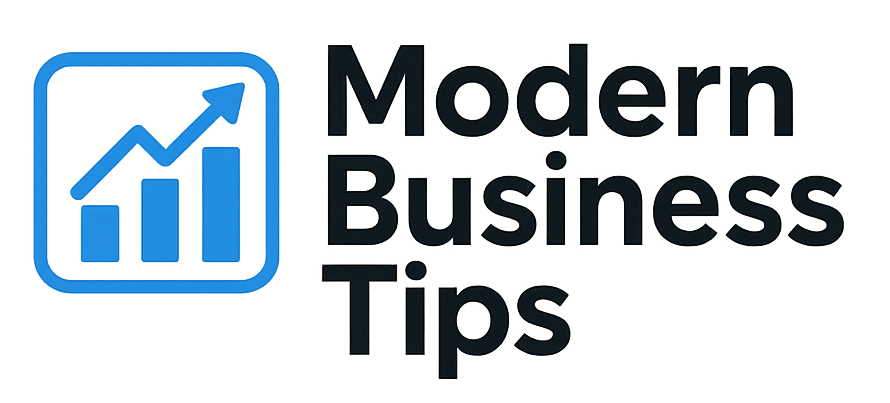Ever thought about why 93 percent of ecommerce brands miss out on a key growth hack? The digital world of ecommerce is growing fast, expected to hit $30 trillion by 2026. It’s important to know the right strategies for growth.
This article will talk about common mistakes that hold brands back. It will also show how personalization can change the game for online shopping. Let’s explore the strategies that many brands haven’t tried yet.
Key Takeaways
- 93 percent of ecommerce brands miss out on key growth strategies.
- Personalization is a key driver for improving customer experience.
- Understanding customer analytics can improve targeted marketing efforts.
- Leveraging social media effectively can boost brand presence and engagement.
- Overcoming common barriers is essential for ecommerce growth success.
- Adopting a user-centric approach significantly enhances user experience.
Understanding Ecommerce Growth and Its Importance
Ecommerce growth is key in the shift to online shopping. It changes how markets work, pushing businesses to be more creative. Looking at ecommerce trends shows how fast online shopping is growing. Businesses need to understand how this growth affects them.
Defining Ecommerce Growth
Ecommerce growth means more sales online. As the digital world changes, businesses must meet new customer needs. Today, people want easy shopping, lots of choices, and good prices.
By keeping up with these needs, companies can grow online. This helps them reach more customers and increase their sales.
Impact of Ecommerce Growth on Businesses
Ecommerce growth does more than just increase sales. It also makes brands more visible and reaches more customers. By following ecommerce trends, businesses can stay ahead in the market.
This leads to stronger customer loyalty. It helps build lasting relationships with shoppers.
| Aspect | Traditional Retail | Ecommerce |
|---|---|---|
| Sales Growth | Slower and dependent on foot traffic | Rapid and global, with access to wider demographics |
| Customer Engagement | In-store promotions and interactions | Personalized email campaigns and targeted ads |
| Cost Structure | Higher overhead costs for physical locations | Lower operational costs and flexible pricing strategies |
Common Misconceptions About Growth Hacks
When we talk about growing an ecommerce business, many myths come up. One big one is thinking growth hacks work for everyone. But, every business is different, needing its own plan based on its goals and who it serves.
Myth vs. Reality in Ecommerce
There are many myths about growing an ecommerce business. Some think there are quick ways to get rich fast. But, real growth takes time and understanding the market well. Businesses that focus on what their customers want do better than those who don’t.
The Role of Technology in Growth
Technology is key in ecommerce growth. But, just getting new tools isn’t enough. It’s about how well these tools fit with what you already do and make customers happy. Using data and insights helps businesses make better plans for growth.
| Misperception | Reality |
|---|---|
| Growth hacks work for all businesses. | Strategies should be tailored to specific business needs. |
| Quick fixes lead to lasting success. | True growth is a sustained effort requiring time. |
| Technology adoption guarantees growth. | Effective integration is essential for real impact. |
| Data insights are optional. | Data-driven decisions are critical for success. |
The Crucial Growth Hack: Personalization
In today’s competitive world, personalization is key for ecommerce growth. It means making the shopping experience unique for each customer. This is based on their behavior, preferences, and past purchases. By focusing on personalization, brands can boost customer engagement and increase revenue.
What is Personalization in Ecommerce?
Personalization in ecommerce is more than just using a customer’s name. It’s about creating a customized shopping journey. This includes personalized product suggestions and targeted marketing. By using data, brands can understand what customers like and offer them what they want.
Benefits of Personalized Shopping Experiences
Personalization offers many benefits beyond just selling more. Here are some key advantages:
- Increased Engagement: Personalized experiences make customers feel valued and understood, leading to more interaction.
- Improved Conversion Rates: Studies show personalized product recommendations can increase conversion rates up to 10 times.
- Enhanced Customer Loyalty: Tailored experiences encourage customers to come back for more.
- Boosted Average Order Value: Personalized upselling and cross-selling can increase the average value of customer transactions.
| Benefit | Description | Impact on Ecommerce Revenue Growth |
|---|---|---|
| Increased Engagement | More meaningful interactions with customers based on their preferences. | Higher chance of repeat purchases. |
| Improved Conversion Rates | Encouraging customers to make purchases based on tailored recommendations. | Directly boosts overall sales. |
| Enhanced Customer Loyalty | Fostering trust and repeat visits through relevant experiences. | Long-term revenue growth through repeat customers. |
| Boosted Average Order Value | Encouraging larger purchases through personalized suggestions. | Increased revenue per transaction. |
The Importance of Customer Analytics
Customer analytics is vital for growing ecommerce businesses. It helps understand what customers like and do. This knowledge is key for making marketing plans that really work.
Collecting and Analyzing Customer Data
Getting data is the first step in using customer analytics. Businesses can get info from:
- Website interactions, like clicks and time spent on pages
- Social media, tracking likes and shares
- Email marketing, looking at open and click rates
After getting the data, analyzing it shows what customers like and do. This helps businesses make better products and messages.
Using Analytics for Targeted Marketing
With data insights, businesses can make marketing that really hits the mark. Tailored messages reach the right people better. Ways to grow ecommerce include:
- Personalized email campaigns
- Custom product recommendations on websites
- Focused social media ads
These methods lead to more sales and loyal customers. They’re key for ecommerce growth.
Leveraging Social Media for Growth
Social media has changed marketing, opening up big chances for online stores to grow. Brands need a strong spot on Instagram, Facebook, and TikTok. Good content boosts visibility and builds a loyal fan base.
Companies that use social media well can really connect with people. They show off their products in a way that grabs attention.
Building a Brand Presence on Social Platforms
Creating a brand presence on social media needs a smart plan. First, find out where your audience hangs out. Then, make content that really speaks to them.
Use pictures and interactive stuff to get people involved. This helps your brand shine in a busy world.
Engaging with Customers Effectively
Engagement is key to making social media work for your online store. Always reply fast to comments and messages. This builds trust and loyalty.
Try running contests and polls to get people involved. In my experience, this can really boost sales and keep customers coming back.
Enhancing User Experience (UX)
A great user experience is key for any online store’s success. By focusing on important elements, businesses can boost customer happiness and keep them engaged. Good UX design makes users feel comfortable while browsing, leading to more sales.
Using the right strategies can make your e-commerce site better for everyone. This helps in growing your online business.
Key Elements of a Great User Experience
- Intuitive Navigation: Clear paths help visitors find what they need.
- Mobile Optimization: A site that works on all devices is a must.
- Fast Loading Times: Quick sites keep customers from leaving without buying.
- Secure Payment Options: Safe transactions build trust and confidence.
Optimizing Your Ecommerce Website for UX
To improve user experience, investing in design is essential. A well-designed e-commerce site looks good and works well. Here’s how different UX features affect customers:
| UX Feature | Impact on User Engagement |
|---|---|
| Clear Call-to-Action Buttons | Increases click-through rate by 20% |
| High-Quality Images | Enhances product appeal, increasing sales conversions by up to 30% |
| User-Friendly Checkout Process | Reduces cart abandonment by 40% |
| Comprehensive Customer Support | Boosts repeat visits by 50% |
Email Marketing Strategies for Ecommerce
Email marketing is key for growing ecommerce revenue. It lets businesses talk directly to customers, building loyalty and boosting sales. Smart email strategies improve customer interaction and increase profits. Here, we’ll look at making emails engaging and the importance of segmenting your audience.
Crafting Engaging Content for Emails
Great emails have content that grabs the reader’s attention. Personalized messages with special offers or tips keep customers interested. A catchy subject line can also increase open rates, making your emails more visible.
When I write emails, I think about what the reader wants to see. I aim to share information that sparks their curiosity.
Segmenting Your Audience for Better Results
Segmenting your audience is vital for email marketing success. By grouping your list by demographics or buying habits, you can tailor your messages. This targeted approach leads to better results, as customers get emails that match their interests.
Overcoming Challenges in Ecommerce Growth
Ecommerce offers big chances for businesses, but it also has big hurdles. Many challenges face brands trying to succeed. By knowing these challenges, I can create good strategies to get past them.
Identifying Common Barriers
It’s key to know the common barriers to make good strategies. Some big challenges are:
- Increased Competition: With more brands, it’s hard to stand out.
- Supply Chain Issues: Problems in the supply chain can make products late, upsetting customers.
- Evolving Customer Expectations: Keeping up with fast-changing customer wants is hard.
Strategies to Tackle These Challenges
Using specific strategies can help beat ecommerce growth barriers. Here are some ways:
- Differentiate Your Brand: Find what makes your brand special and focus on that.
- Streamline Your Supply Chain: Work with trusted partners and use new tech to make things better.
- Embrace Customer Feedback: Use what customers say to make your products and shopping better.
- Implement Effective Marketing: Talk to customers with targeted ads, using data to make them better.
Conclusion: Embracing the Growth Hack
Embracing effective growth hacks is key for success in ecommerce today. Strategies like personalization and using customer analytics are vital. They help drive growth and set a brand apart.
Using social media and creating a great user experience are also important. These actions can make a brand stand out in the fast-paced ecommerce world.
Recap of Key Points
This article covered important points for ecommerce growth. Personalization grabs customers’ attention, and data analysis guides marketing. Social media engagement builds relationships, and a good user experience boosts satisfaction.
By using these strategies, businesses can thrive. They are not just for survival but for significant success.
Taking Action for Future Success
The growth of ecommerce is huge, and using growth hacks can unlock opportunities. It’s time to act now. Adopting new practices will move my business forward and meet changing consumer needs.
My ecommerce journey’s future depends on adapting and using these strategies. They are essential for ongoing success.



